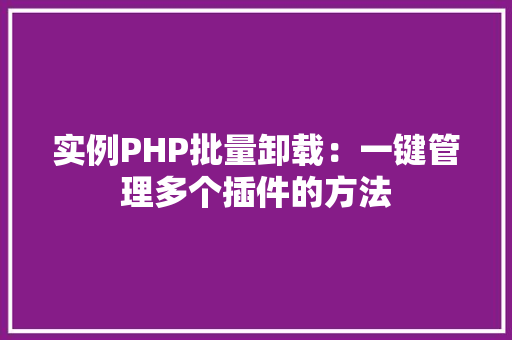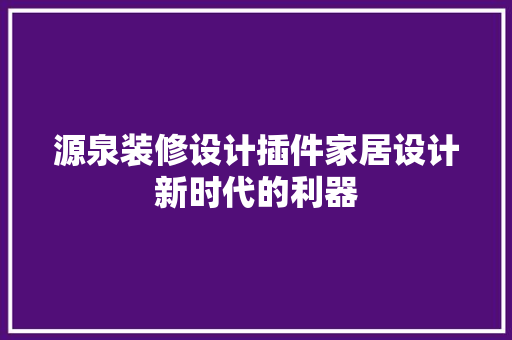在PHP开发过程中,我们经常会使用到各种插件来扩展功能。但是,随着项目的迭代和更新,有些插件可能不再需要,或者存在兼容性问题。这时,批量卸载插件就变得尤为重要。以下是一个简单的实例,演示如何使用PHP批量卸载插件。
1. 准备工作
我们需要建立一个包含所有插件信息的数组。数组的键代表插件名称,值代表插件路径。

```php
$plugins = [
'plugin1' => '/path/to/plugin1',
'plugin2' => '/path/to/plugin2',
'plugin3' => '/path/to/plugin3',
// ...
];
```
2. 批量卸载插件
接下来,我们将遍历这个数组,并删除每个插件对应的文件。
```php
foreach ($plugins as $pluginName => $pluginPath) {
// 删除插件目录
$deleteDir = $pluginPath;
if (is_dir($deleteDir)) {
$files = new RecursiveIteratorIterator(
new RecursiveDirectoryIterator($deleteDir, RecursiveDirectoryIterator::SKIP_DOTS),
RecursiveIteratorIterator::CHILD_FIRST
);
foreach ($files as $file) {
if ($file->isFile()) {
unlink($file->getRealPath());
}
}
rmdir($deleteDir);
}
}
```
3. 查看效果
执行上述代码后,你将看到所有指定的插件目录被删除,从而实现批量卸载。
表格展示
| 插件名称 | 插件路径 | 操作结果 |
|---|---|---|
| plugin1 | /path/to/plugin1 | 已删除 |
| plugin2 | /path/to/plugin2 | 已删除 |
| plugin3 | /path/to/plugin3 | 已删除 |
| ... | ... | ... |
通过以上实例,我们可以轻松地实现PHP批量卸载插件。在实际应用中,你可以根据需要修改插件名称和路径,以达到更好的管理效果。





